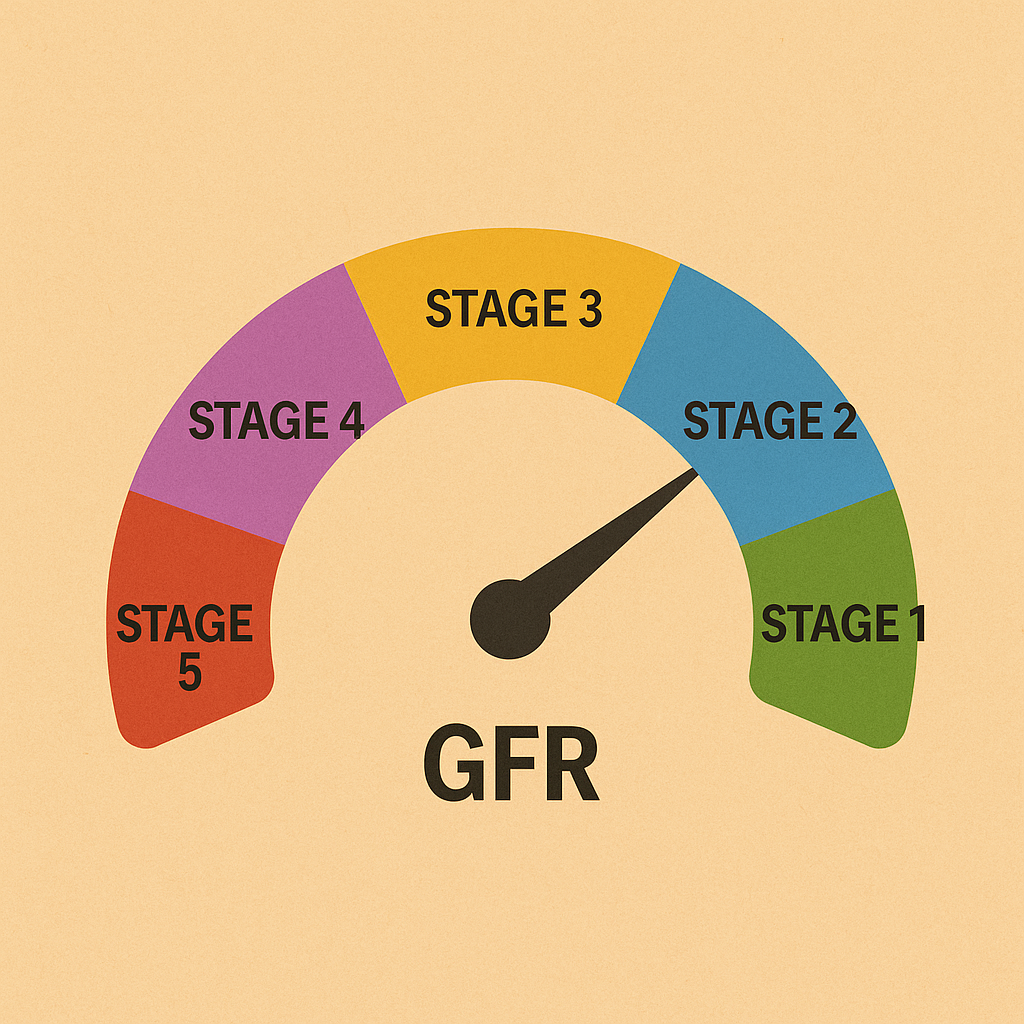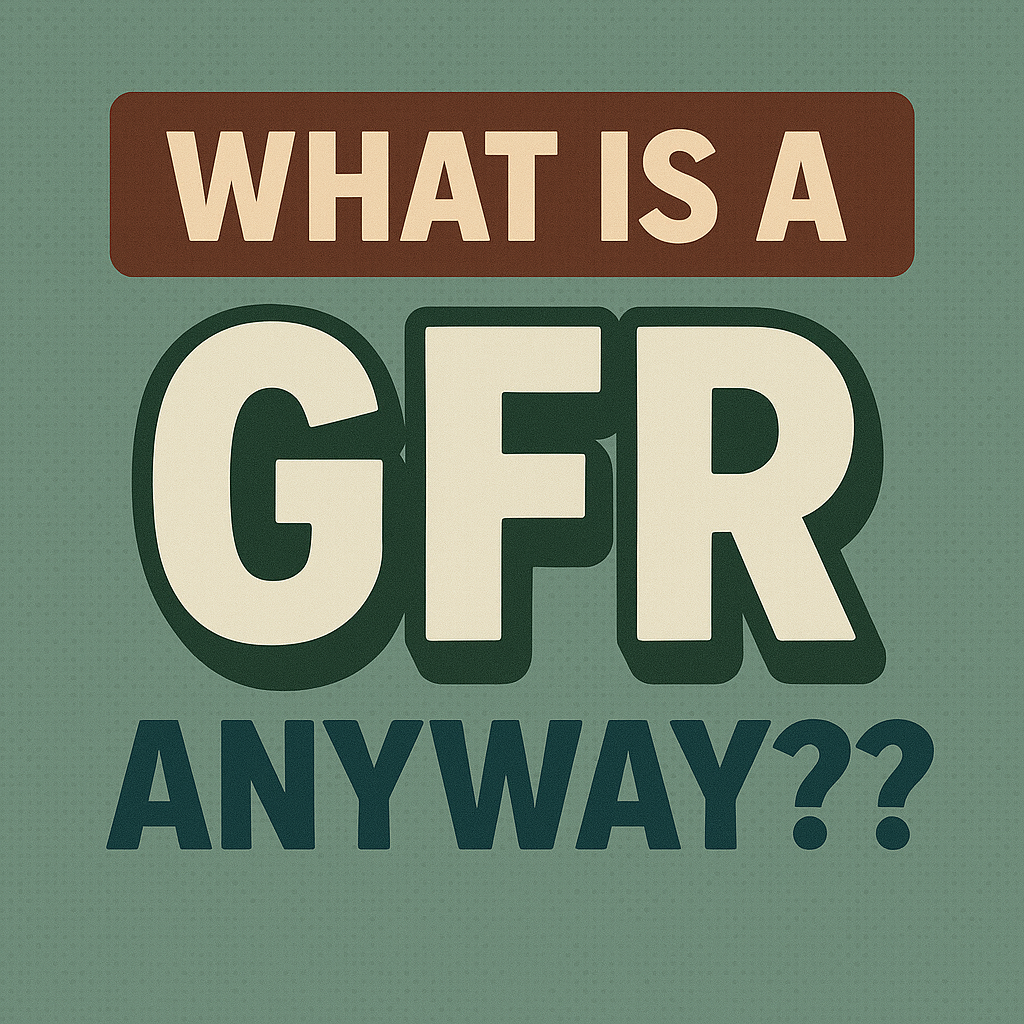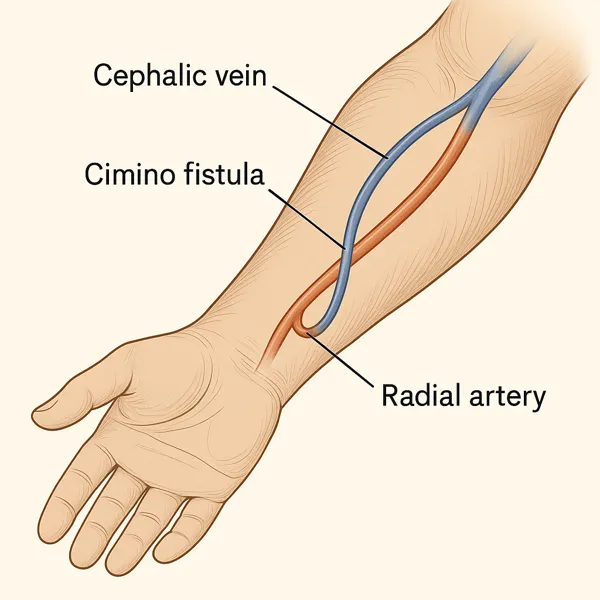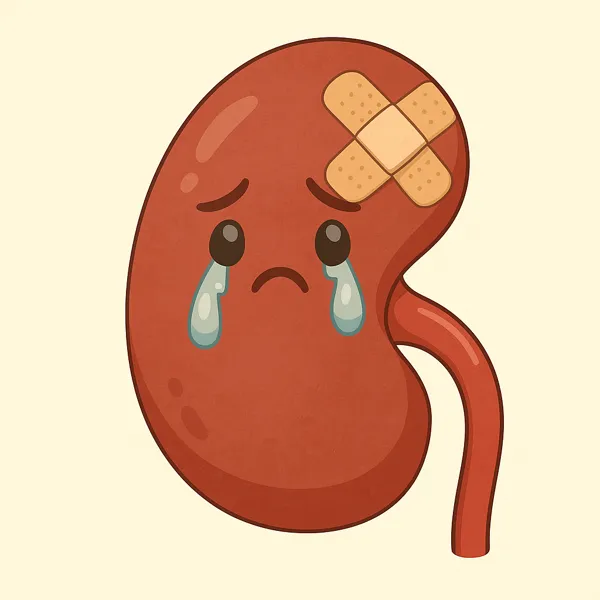“What Is GFR in CKD and Why Is It important?”
The Kidney Number That Matters
If you’ve been diagnosed with chronic kidney disease (CKD), chances are your doctor mentioned your “GFR” — often followed by a number that left you more confused than informed. So let’s break it down.
GFR stands for Glomerular Filtration Rate, and it’s one of the most important numbers in kidney health. It estimates how well your kidneys are filtering waste and fluid from your blood. Unlike a blood pressure or heart rate you can feel, this value is calculated from your lab results and gives insight into what your kidneys are doing quietly, behind the scenes, every minute of the day.
What Is a Normal Glomerular Filtration Rate?
A healthy GFR is usually around 90–120 mL/min, depending on your age, size, and sex. This number isn’t something that’s measured directly during your check-up. Instead, your GFR is estimated using a formula that includes:
- Your blood creatinine level (a waste product your kidneys remove)
- Your age
- Your sex
- Race modifiers are historical and no long in modern practice.
This gives you an eGFR, or estimated Glomerular Filtration Rate. It’s not perfect, but it’s useful—and widely accepted in medical practice.
But What Do These Numbers Actually Mean?
Your eGFR helps determine your CKD stage:
| CKD Stage | eGFR Range (mL/min) | What It Means |
|---|---|---|
| Stage 1 | 90 or higher | Normal function but signs of damage |
| Stage 2 | 60–89 | Mild loss of function |
| Stage 3a | 45–59 | Mild to moderate loss |
| Stage 3b | 30–44 | Moderate to severe loss |
| Stage 4 | 15–29 | Severe loss of kidney function |
| Stage 5 | Less than 15 | Kidney failure (may need dialysis) |
One low eGFR value doesn’t necessarily mean you have chronic kidney disease. To meet diagnostic criteria, kidney function typically needs to remain below normal for at least 2–3 months. However, CKD can also be diagnosed based on other persistent findings—such as abnormal urine tests, structural abnormalities seen on imaging, or known genetic variants—even when blood work appears normal.
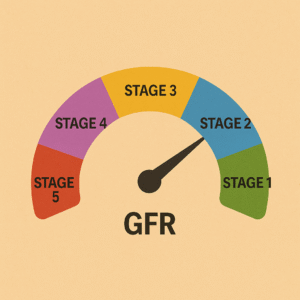
Why Is Everyone Talking About It?
Because eGFR tracks how much work your kidneys can still do. It helps guide decisions like:
- When to start or stop medications
- How often you need lab testing
- Whether you need to see a kidney specialist (nephrologist)
- If it’s time to talk about dialysis planning (usually when GFR is below 30)
It also helps determine how aggressive your care plan should be. A GFR of 58 might just mean “watch and maintain.” An eGFR of 17 means “time to prepare for the next steps.”
Can eGFR Improve?
Yes — sometimes. eGFR can fluctuate day to day based on hydration, medications, or lab variability. If your kidneys are under temporary stress (like from dehydration or an infection), they may bounce back.
But in chronic conditions like diabetes or high blood pressure, the trend is usually slow decline. That said, a good care plan can dramatically slow progression, and some people stay stable for years.
What Low eGFR Doesn’t Tell You
Your estimated glomerular filtration rate doesn’t explain why you have CKD. It’s just one part of the puzzle. That’s why doctors also look at your:
- Urine tests (especially for protein)
- Blood pressure
- Medical history
- Imaging or biopsy, in some cases
A good care team doesn’t just watch your number drop — they help you understand why it’s dropping and what you can do about it.
Just as creatinine levels can fluctuate with changes in hydration, physical activity, dietary protein, or certain medications, your estimated glomerular filtration rate can also shift slightly from one lab panel to the next. These small variations are normal and often reflect temporary physiological changes rather than true shifts in kidney function. What matters more than a single eGFR value is the pattern it forms over time. A stable or slowly declining trend may reflect controlled chronic kidney disease, while a consistently downward trajectory could signal progressive renal impairment. Providers will look at this trend in the context of your overall health, medications, and lab history to determine whether your kidney function is holding steady or requires closer monitoring. Understanding this context helps reduce anxiety over minor fluctuations and focuses attention where it belongs—on long-term kidney health.
The Takeaway
Estimated Glomerular Filtration Rate is your kidneys’ report card. It’s not the whole story, but it’s one of the most useful tools we have for tracking how your kidneys are doing—and what kind of support they need.
If you know your numbers, you can better advocate for your care. Sign up for your lab portal to gain access to your results or ask your provider. It’s one of the most important values in your kidney wellness journey.
References
- Levey AS, Becker C, Inker LA. Glomerular filtration rate and albuminuria for detection and staging of CKD: a KDIGO controversy conference. Am J Kidney Dis. 2019;73(4):539–552.
- National Kidney Foundation. Glomerular Filtration Rate. https://www.kidney.org/atoz/content/gfr

